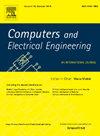Discrete Ricci Flow: A powerful method for community detection in location-based social networks
IF 4
3区 计算机科学
Q1 COMPUTER SCIENCE, HARDWARE & ARCHITECTURE
引用次数: 0
Abstract
Community detection is crucial to understanding behavioral patterns in location-based social networks (LBSNs) where user locations, media, and check-ins are involved. This hierarchical structure enables the formation of user communities, where a community represents a group of users sharing similar interests. In addition, selecting an appropriate community for a recommendation scenario is crucial and challenging. To address these issues, in this article, we propose a novel method to link LBSNs to the Discrete Ricci Flow (DRF) community detection algorithm. Then we use the communities formed by the Ricci curvature of the network to provide recommendations in a user-based collaborative filtering (CF) recommender system. Our evaluation method considers spatial–temporal features and user relationships. The evaluation encompasses unsupervised and supervised learning methodologies, employing the modularity evaluation index and the CF recommender system. Comparative analysis against traditional community detection algorithms, including Leiden, Infomap, Walktrap, and Fast Greedy, reveals the superior performance of our proposed method, as it achieves an impressive 0.5075% and 0.8486% modularity scores for Gowalla and Brightkite respectively that indicates the efficacy of the method in capturing the inherent structure of the data. Furthermore, when integrated into the CF recommender system, the proposed method based on DRF demonstrates superior performance compared to other community detection methods for different data sets such as Gowalla and Brightkite. In particular, for Gowalla it improves the performance of the Point Of Interest (POI) recommendation system by an average of 10.92% and 8.02% in Recall@15 and Recall@20, respectively.
离散里奇流:一种在基于位置的社交网络中进行社区检测的强大方法
社区检测对于理解基于位置的社交网络(LBSNs)中的行为模式至关重要,其中涉及到用户位置、媒体和签到。这种分层结构支持用户社区的形成,其中社区代表一组具有相似兴趣的用户。此外,为推荐场景选择合适的社区是至关重要且具有挑战性的。为了解决这些问题,在本文中,我们提出了一种将lbsn与离散里奇流(DRF)社区检测算法联系起来的新方法。然后利用网络的Ricci曲率形成的社区,在基于用户的协同过滤(CF)推荐系统中提供推荐。我们的评估方法考虑了时空特征和用户关系。评估包括无监督和监督学习方法,采用模块化评估指标和CF推荐系统。通过与传统社区检测算法(Leiden、Infomap、Walktrap和Fast Greedy)的对比分析,我们提出的方法表现出了卓越的性能,Gowalla和Brightkite的模块化得分分别达到了0.5075%和0.8486%,表明了该方法在捕获数据固有结构方面的有效性。此外,将基于DRF的方法集成到CF推荐系统中,与Gowalla和Brightkite等不同数据集的其他社区检测方法相比,所提出的方法表现出更优越的性能。特别是,对于Gowalla来说,它在Recall@15和Recall@20上分别平均提高了10.92%和8.02%的兴趣点(POI)推荐系统的性能。
本文章由计算机程序翻译,如有差异,请以英文原文为准。
求助全文
约1分钟内获得全文
求助全文
来源期刊

Computers & Electrical Engineering
工程技术-工程:电子与电气
CiteScore
9.20
自引率
7.00%
发文量
661
审稿时长
47 days
期刊介绍:
The impact of computers has nowhere been more revolutionary than in electrical engineering. The design, analysis, and operation of electrical and electronic systems are now dominated by computers, a transformation that has been motivated by the natural ease of interface between computers and electrical systems, and the promise of spectacular improvements in speed and efficiency.
Published since 1973, Computers & Electrical Engineering provides rapid publication of topical research into the integration of computer technology and computational techniques with electrical and electronic systems. The journal publishes papers featuring novel implementations of computers and computational techniques in areas like signal and image processing, high-performance computing, parallel processing, and communications. Special attention will be paid to papers describing innovative architectures, algorithms, and software tools.
 求助内容:
求助内容: 应助结果提醒方式:
应助结果提醒方式:


